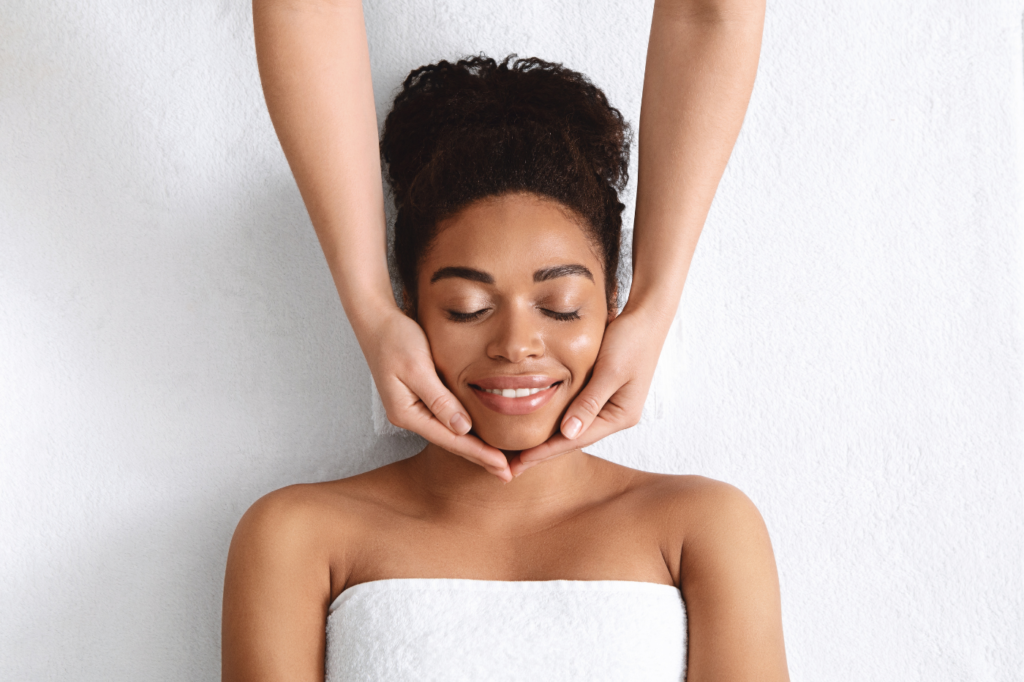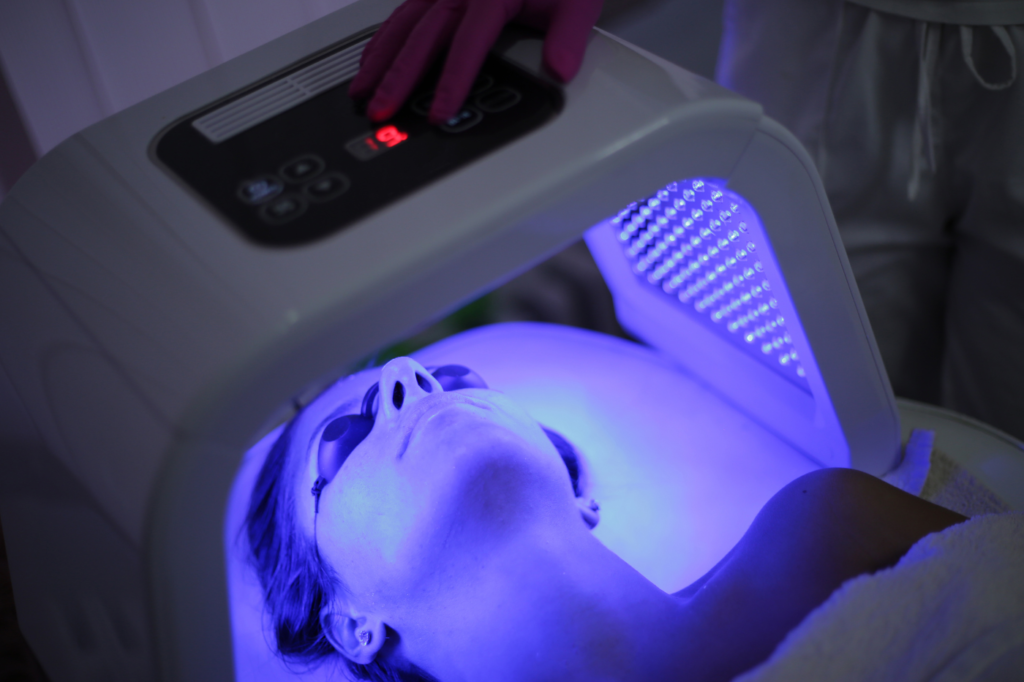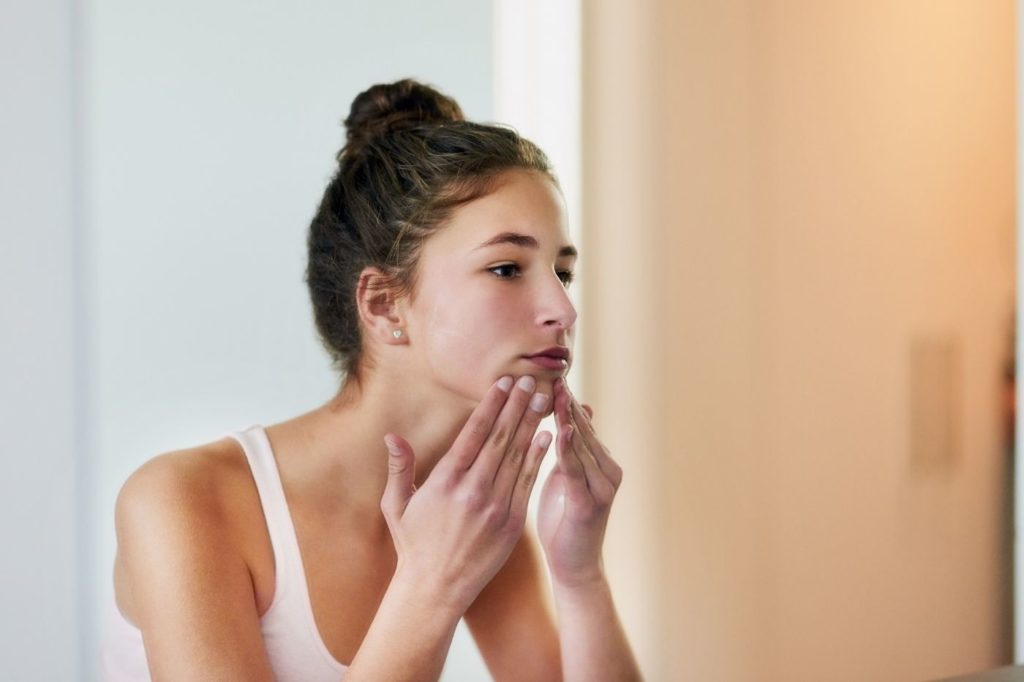According to the American Academy of Dermatology Association (AAD), acne is the most common skin condition in the nation affecting approximately 50 million Americans. Even though acne can occur at any age, acne usually begins in puberty, impacting about 85 percent of individuals between the ages of 12 and 24 with mild to moderate symptoms.
Research has also indicated that acne is increasing among adults, with many people experiencing problems with acne well into their 30s and 40s.
As a result of the rise in adult acne, an increasing number of people are looking to available spa treatments to help clear up their acne-prone skin. And while there isn’t a one-size-fits-all solution for acne treatment, plenty of great options offer immediate and long-lasting results. Let’s look at 6 of the best spa treatments for acne-prone skin.
The Best Spa Treatments for Acne-Prone Skin
Depending on the type and severity of your acne, these six spa treatments can help treat active breakouts, prevent future breakouts, and treat acne scarring.
1. HydraFacial
HydraFacials are an extremely effective, non-invasive treatment option that is generally safe for all skin types. HydraFacials use a water-based solution to gently exfoliate the skin, removing the outermost, dead layer of the skin helping to decrease the oil and grime that cause acne.
They also help break up hyperpigmentation and smooth acne scarring, leaving you with smoother skin, a clearer complexion, smaller, less noticeable pores, and fewer breakouts.
2. Chemical Peels
Chemical peels are an acid solution applied to the face that damages and removes the top layer of dull skin, revealing smoother, healthier-looking skin. These chemical peels impact our skin at different depths, so the peel that is appropriate for you will depend on your concerns.
Salicylic Acid Peels
Salicylic acid provides deep exfoliation while treating acne. It can also improve hydration, keeping your pores clearer for longer, leading to fewer breakouts.
Glycolic Acid Peels
Glycolic acid helps exfoliate the outermost and middle skin layers while stimulating collagen production. This peel is ideal for all skin types and leaves you with fresh-looking skin.
Trichloroacetic Acid Peels (TCA)
TCA is a specially made acid used to perform peels at all levels of the skin. It kills acne-causing bacteria, cleanses pores, and reduces pore size, making it harder for acne-causing bacteria to settle. TCA peels can also help reduce fine lines and acne scarring, making the skin smoother and more even.
Chemical peels can take two weeks (or more) to heal, but they can help reduce pore size and possibly decrease sebum production, meaning fewer long-term breakouts.
3. Light Therapy
Light therapy, also known as Phototherapy, is effective for treating acne, especially acne caused by bacteria or inflammation.
Intense Pulsed Light Therapy (IPL)
IPL uses broad-spectrum light to stimulate collagen growth, break down pigment, decrease blood vessels, and shrink sebaceous glands. IPL helps improve moderate to severe inflammatory acne, leaving you with smoother, brighter skin.
Broadband Light Therapy (BBL)
BBL treatments help to control sebum production while also removing oil, debris, and blackheads. In addition, BBL targets bacteria on the skin that cause acne, helping to reduce pore size and the number of active acne lesions.
Blue Light Therapy for Acne
Blue light therapy uses blue light from an LED to target and destroy bacteria that reside on or in the skin, decreasing breakouts and reducing skin discoloration and inflammation.
PDT uses a topical photosensitizing agent along with light to help increase the skin’s sensitivity to light. The topical agent and light help reduce the amount of oil within the pores and kill bacteria that cause breakouts, resulting in fewer breakouts, improved skin texture, and diminished acne scarring.
Isolaz Acne Light Treatment
Isolaz is a unique acne therapy that combines vacuum and broadband light therapy to deliver effective acne treatment. The pore cleansing vacuum helps loosen and extract dirt, excess oil, and blackheads from within your pores while the broadband light destroys the acne-causing bacteria.
4. Laser Treatments
Laser treatment for acne aims to minimize the appearance of acne and acne scars by focusing light on the top layers of the skin to encourage new healthy skin cells to grow.
Clear + Brilliant Fractional Laser
Clear + Brilliant laser treatments utilize two types of laser light to create hundreds of microscopic treatment areas in the upper layers of the skin, encouraging the body to replace damaged skin with healthy new tissue.
Non-ablative Fraxel Laser
Non-ablative Fraxel laser heats targeted tissue without destroying it to help stimulate your body’s collagen production to help improve the appearance of acne scars, age spots, sun damage, fine lines, wrinkles, and hyperpigmentation.
Radiofrequency
Radiofrequency treatments pass a current through the inner layer of the skin, the dermis, to produce minor wounds which stimulate the body to produce new collagen and shrink the sebaceous glands.
5. Microneedling
Microneedling treatments utilize tiny, sterilized needles to prick the skin’s surface, creating small wounds. The small wounds stimulate the body to produce more collagen and elastin, helping the skin to look full and smooth.
Microneedling can treat acne, scarring, dark spots, stretch marks, and fine lines or wrinkles.
6. Facials
One of the best things you can do to keep acne-prone skin under control is to incorporate the right products into your skincare routine and regular facials. Facials can help treat a variety of acne-prone skin concerns by helping to calm overactive skin, remove impurities, kill bacteria that cause acne, and stimulate your skin’s natural healing processes.
Acne Scar Treatments
About 80% of patients with acne suffer from acne scarring. So, it’s no surprise that I’m regularly asked about treatment options for acne scars. The good news, many of the spa treatments that help acne-prone skin can also help improve the appearance of acne scars.
Learn more available options for treating acne scarring.
When should I see a dermatologist for acne?
You don’t have to have severe acne to see a dermatologist. Many people with acne-prone skin can benefit from seeing a dermatologist.
A dermatologist can help you identify the appropriate treatment for your acne, make skincare suggestions based on your skin type, and give tips on avoiding acne scarring.
So, when in doubt, check in with your dermatologist.
Heal Your Skin from the Inside and Out
Your skin’s appearance reflects your unique state of overall health, age, and environmental factors. Digging deeper to reveal what may be holding you back from achieving the healthy, glowing skin you desire can help you heal your skin from the inside out.
Join me on a skin healing journey different from anything you’ve done before. Learn what the health of your skin may be saying about what’s happening inside your body.
Discover how you can get clear skin using my SkinClock Method.
Limited spots are available for upcoming sessions.
Join my waitlist today and discover how to STOP your unpredictable breakouts…so you can finally have the youthful, radiant skin you desire!
References
- “The burden of skin diseases: 2004 a joint project of the … – PubMed.” https://pubmed.ncbi.nlm.nih.gov/16908356/. Accessed 15 Sep. 2022.
- “Epidemiology of acne vulgaris – PubMed.” https://pubmed.ncbi.nlm.nih.gov/23210645/. Accessed 15 Sep. 2022.
- “A clinico-epidemiological study of adult acne: is it different … – PubMed.” https://pubmed.ncbi.nlm.nih.gov/22565434/. Accessed 15 Sep. 2022.
- “Efficacy of Intense Pulsed Light Therapy in the Treatment of Facial ….” https://www.ncbi.nlm.nih.gov/pmc/articles/PMC5029242/. Accessed 19 Sep. 2022.
- “Acne Treatment With 3-Step Broadband Light Protocol – PubMed.” 1 Nov. 2016, https://pubmed.ncbi.nlm.nih.gov/28095551/. Accessed 19 Sep. 2022.
- “Clinical Efficacy of Self-applied Blue Light Therapy for Mild-to … – NCBI.” https://www.ncbi.nlm.nih.gov/pmc/articles/PMC2923954/. Accessed 19 Sep. 2022.
- “The Role of Photodynamic Therapy in Acne: An Evidence-Based ….” https://pubmed.ncbi.nlm.nih.gov/28276005/. Accessed 19 Sep. 2022.
- “Laser Treatment of Acne Vulgaris – PMC – NCBI.” https://www.ncbi.nlm.nih.gov/pmc/articles/PMC2884837/. Accessed 19 Sep. 2022.
- “focus on nonablative treatment of acne scars – PMC – NCBI.” 12 Dec. 2014, https://www.ncbi.nlm.nih.gov/pmc/articles/PMC4270307/. Accessed 19 Sep. 2022.



